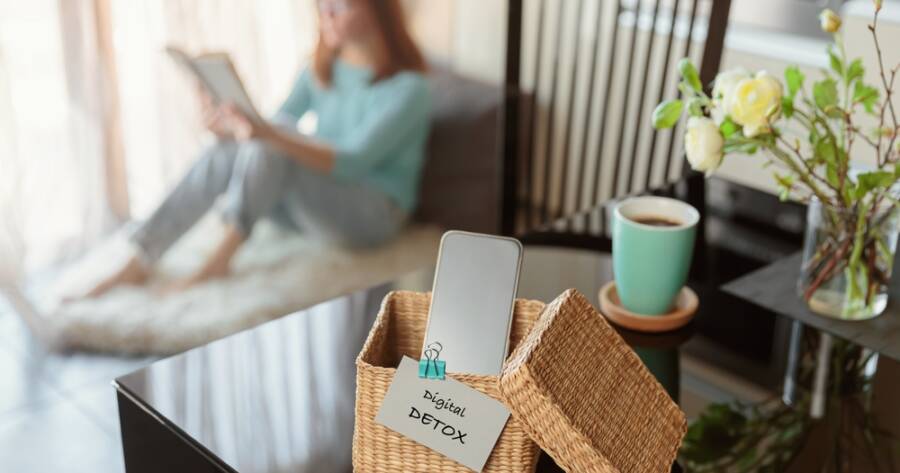In a world where our devices are always within reach—and notifications never seem to stop—it’s easy to feel like your time and attention are no longer your own. We pick up our phones to check the time and end up scrolling for 30 minutes. We sit down to relax and end up juggling group chats, emails, and Instagram. If your screen time is climbing and your focus feels scattered, you’re not alone—and it might be time for a digital detox.
A digital detox doesn’t mean going off the grid completely. It’s about creating boundaries with technology so you can reconnect with yourself, your surroundings, and the people around you. Ready to feel more present and less glued to your screen? Here’s how to start, step by step.
Notice How You Use Your Devices
The first step in any digital detox is awareness. Before you make changes, take stock of your current habits. Most smartphones have built-in screen time trackers—check yours and see where your hours are going. Is it social media? Email? Games?
Then ask yourself:
-
When do I reach for my phone the most?
-
How do I feel after scrolling? Energized or drained?
-
What parts of my day feel hijacked by technology?
This honest reflection helps you identify your biggest digital drains and where you’d benefit from cutting back.
Set Boundaries—And Stick to Them
One of the most powerful ways to reclaim your attention is by creating tech boundaries that fit your lifestyle. Here are a few simple but effective ideas:
-
No screens first thing or right before bed: Start and end your day with intention, not with emails or endless newsfeeds. Try stretching, journaling, or reading a physical book instead.
-
Use app timers or focus modes: Set time limits on social media or block access during certain hours. Many phones and apps now offer tools like “Do Not Disturb” and “Focus Mode.”
-
Create phone-free zones: Keep devices out of the bedroom, off the dinner table, or away during walks. These screen-free pockets can significantly boost your presence and peace of mind.
-
Batch your screen time: Instead of checking notifications all day, set specific times to respond to texts, emails, or social feeds.
Remember, boundaries don’t have to be extreme—they just need to be consistent.
Replace Scrolling with Something You Love
Cutting back on screen time is easier when you replace it with something fulfilling. What did you enjoy before phones filled every free moment? Reading? Painting? Walking? Cooking? Playing music?
Start small. When you feel the urge to scroll out of boredom, try:
-
Listening to a podcast while stretching or doing chores
-
Going for a walk and noticing what’s around you
-
Writing in a journal or doodling
-
Calling a friend instead of messaging
The goal isn’t to fill every moment with productivity—but to make space for real-life experiences that fuel your mind and body.
Take Breaks, Not Guilt Trips
Detoxing from digital overload is a process, not a punishment. You don’t need to cut out screens completely or get it “perfect.” In fact, being too strict can backfire. What matters most is intention—choosing when and how to engage with technology, instead of letting it rule you by default.
If you fall into old habits, that’s okay. Just pause, take a breath, and reset. Every moment is a chance to shift your focus back to what matters most.
Reclaim Presence, One Moment at a Time
When you create distance from your devices, you open up space—for clarity, creativity, and connection. You start to notice more: the rhythm of your breath, the sound of birds outside your window, the expressions on people’s faces. You become more present in conversations, more grounded in your routines, and more in control of your attention.
A digital detox doesn’t have to be drastic to be effective. With small, intentional changes, you can reduce screen time, break free from digital distraction, and start living more fully in the moment—no logoff announcement required.

